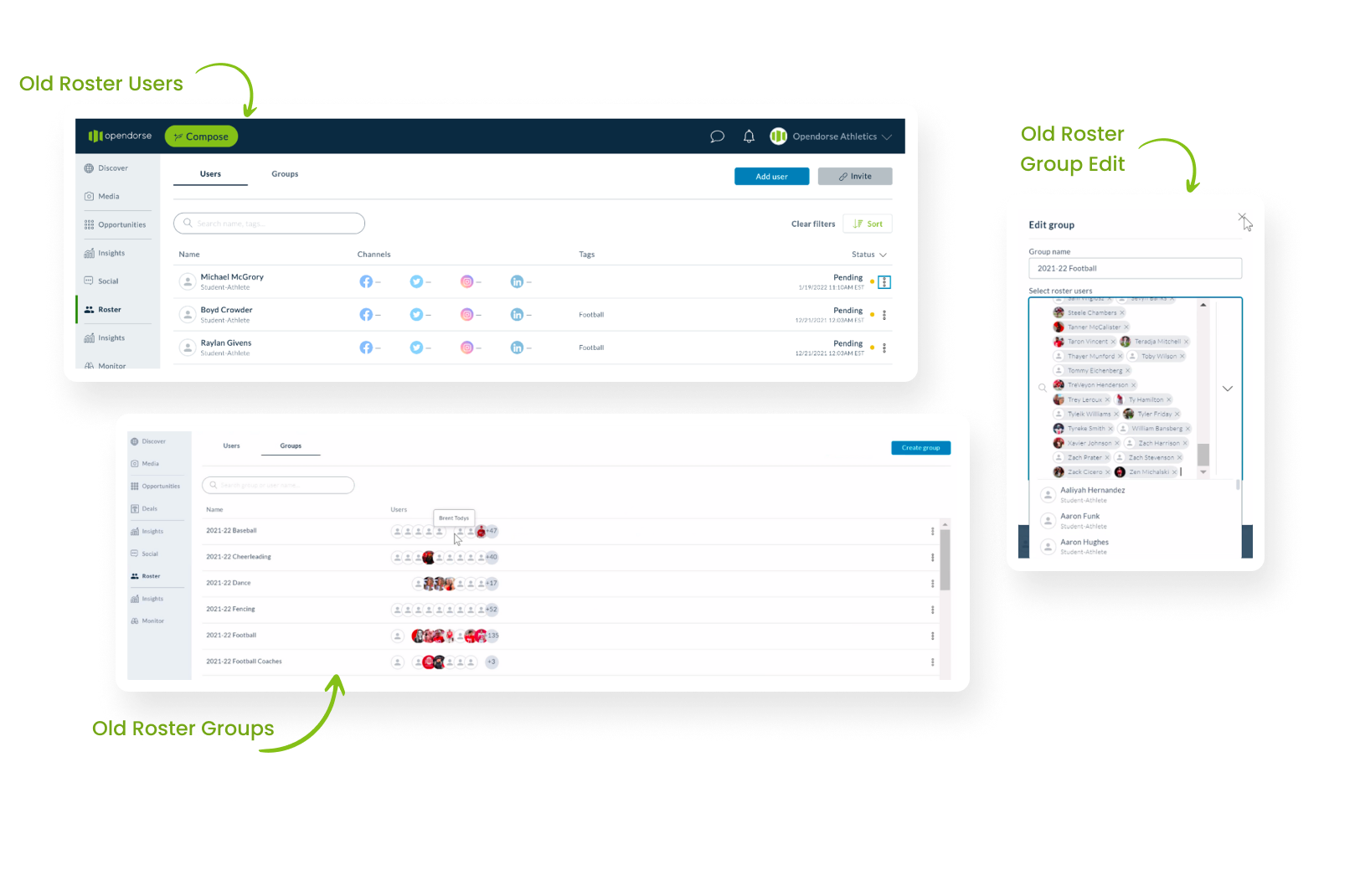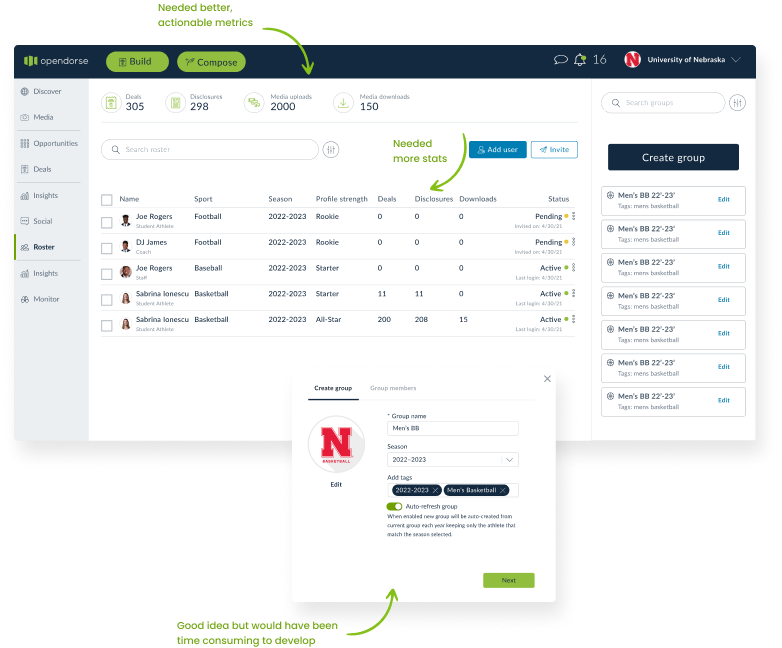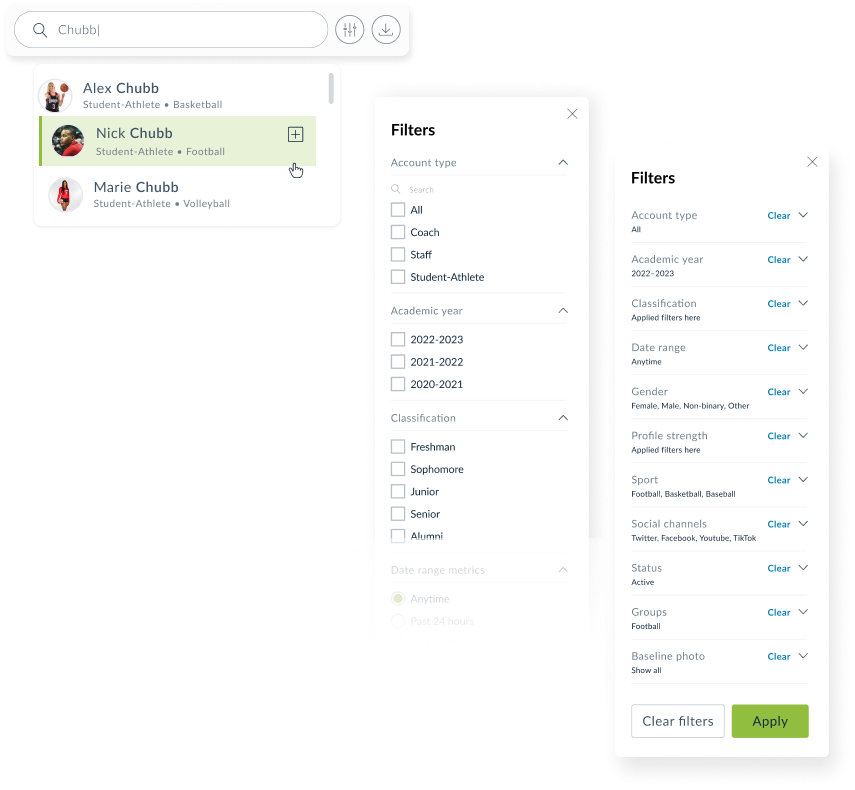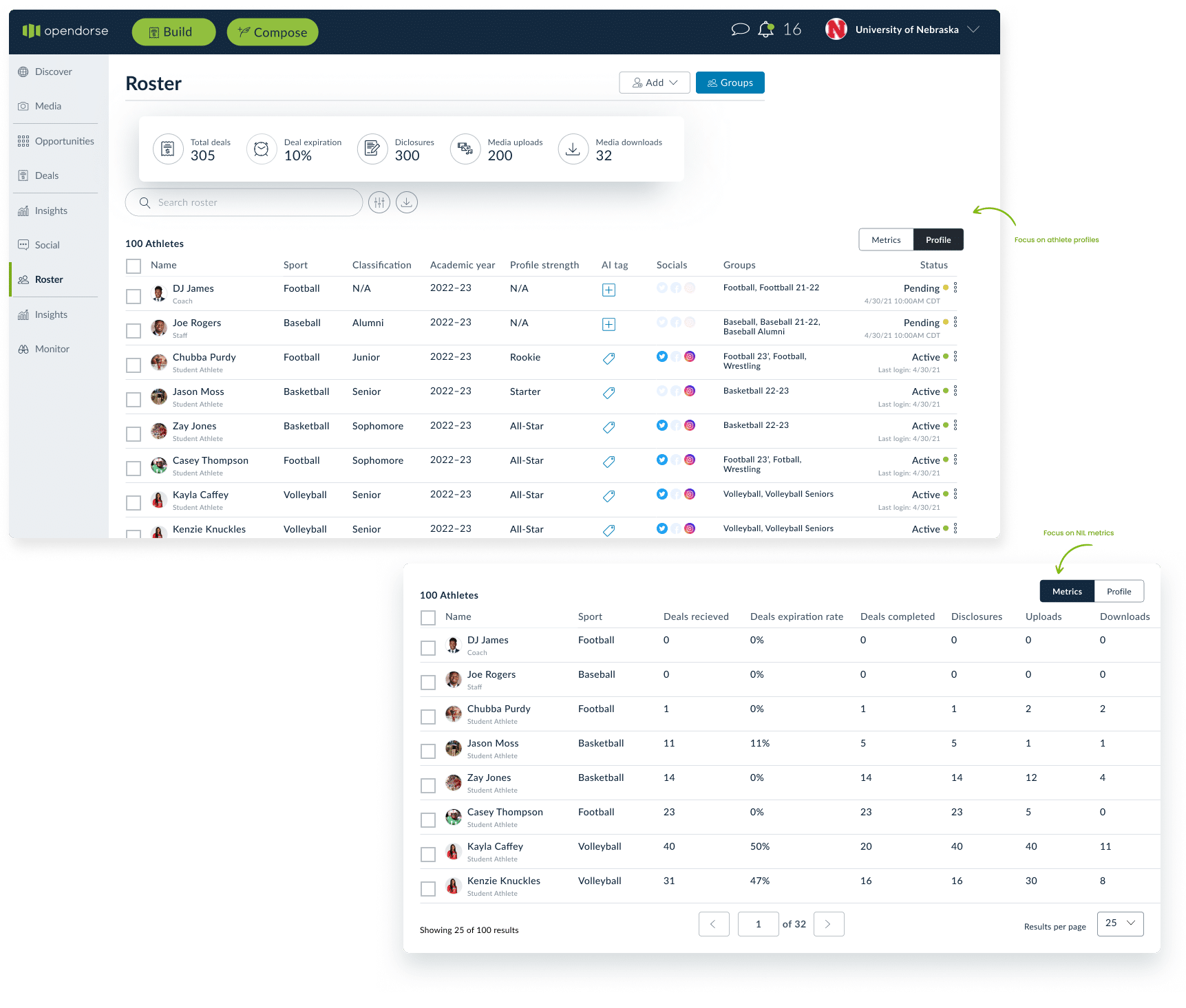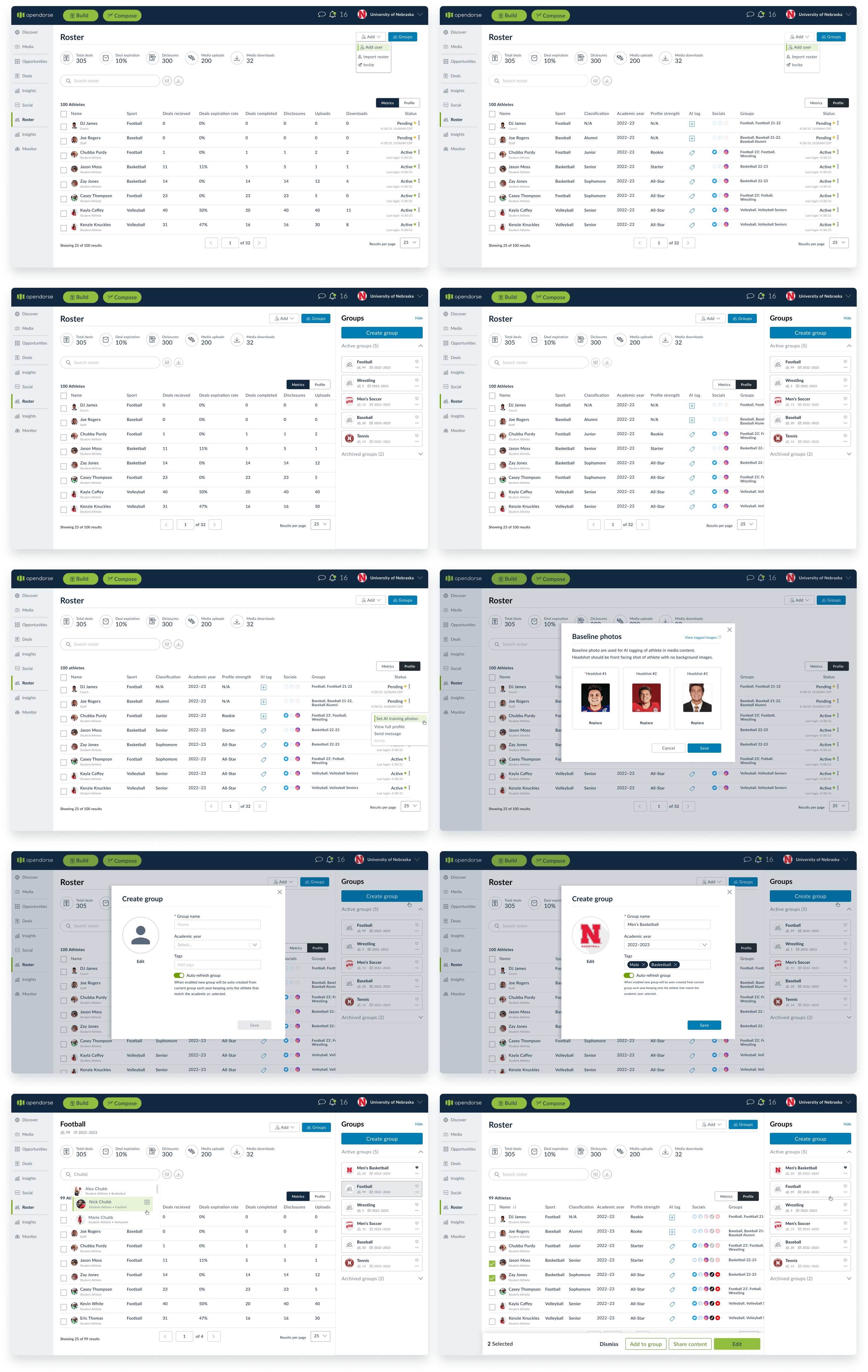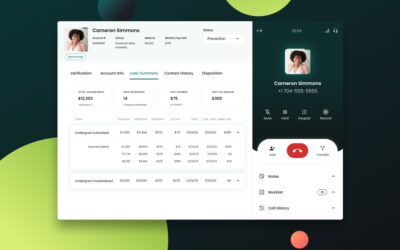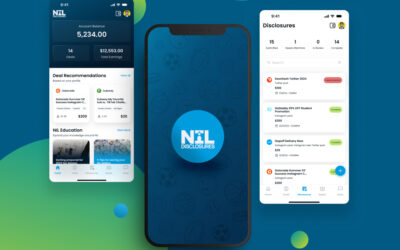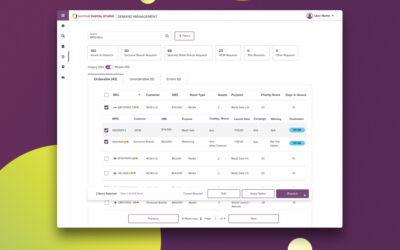Opendorse Roster Revamp
Client / Project
Opendorse
Year
2022
Role
Senior Product Designer
Responsibilities
User Experience, UX Strategy, User Interface Design, User Research, User Testing, Prototyping
OVERVIEW
About Opendorse
Opendorse is the world’s leading athlete influencer platform. Thousands of schools, fans, brands, sponsors, and collectives utilize Opendorse to assist over 100,000 athletes in building and monetizing their name, image, and likeness. They do this through the world’s leading marketplace and technology solutions. The top sports schools and organizations use Opendorse for NIL (name, image, likeness) compliance, education, and content solutions.
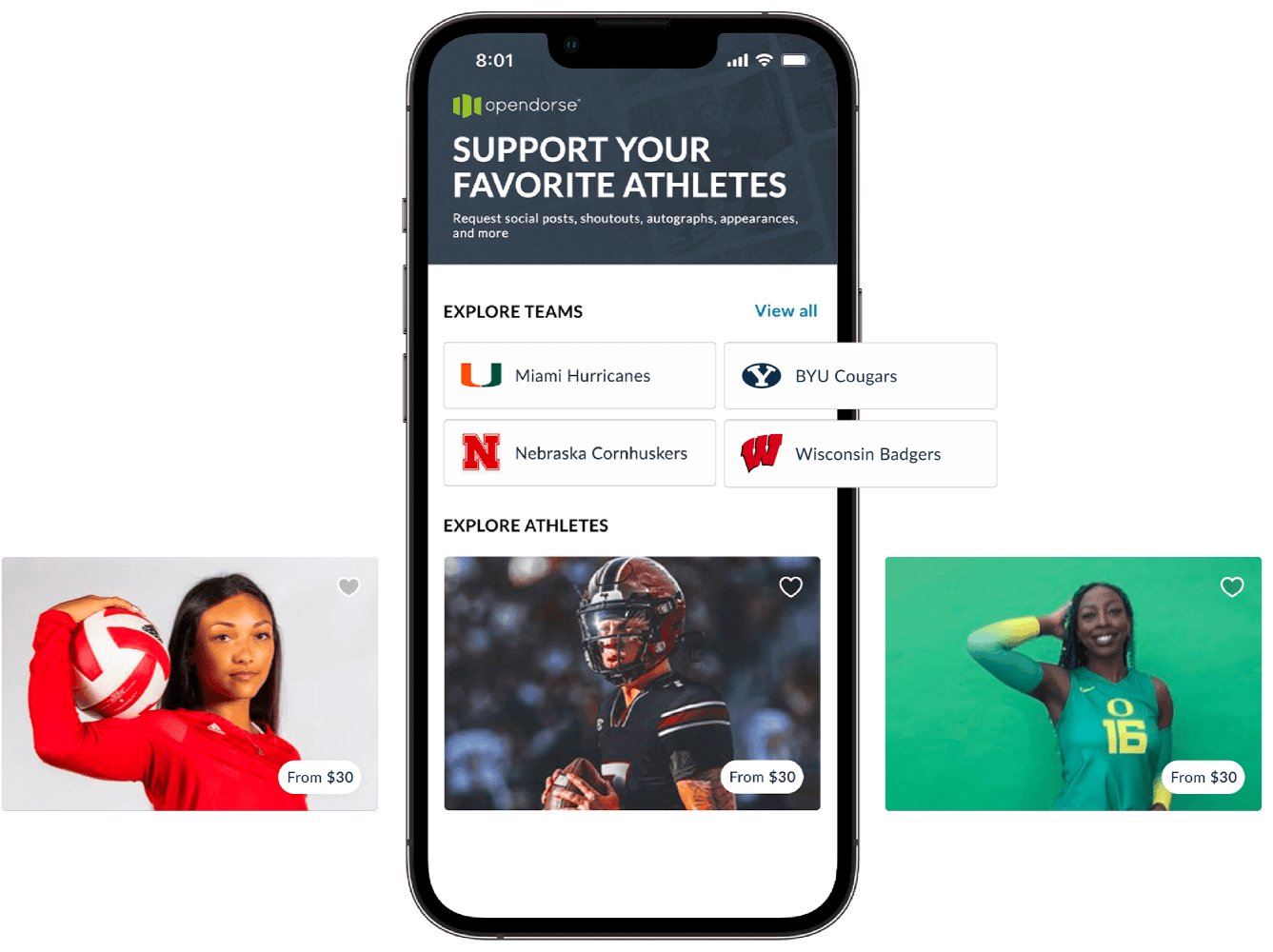
What is Roster?
Roster is a feature in Opendorse’s SaaS product. It is primarily used by colleges and brands to build out their teams or rosters of athletes, facilitating the sharing of media for athletes to post on their personal social channels. Additionally, it serves as a platform to manage athletes across various teams.
Problem
The operations team and colleges seek additional functionality from the current roster feature. At present, colleges find it difficult to use this feature and are unsure about its working beyond sharing media with students. Consequently, they often reach out to the operations team for assistance with managing their rosters, diverting the team from their other responsibilities.
goalS
This project aimed to not only improve the roster feature for better daily task management by users but also to evolve it into a multidimensional tool.
process
A Design Thinking approach was used for this project.
Empathize
- User interviews
Define
- Synthesize Research
Ideate
- User Stories
- Team Collabs
Prototype
- Hi-fi Screens
Test
- Usability Test
- User Satisfaction Survey
Empathize
To comprehend the problem space, I initially interviewed the Operations team, which manages the rosters of college partners. Subsequently, I interviewed a few colleges and brands that have been part of our platform for a significant period.
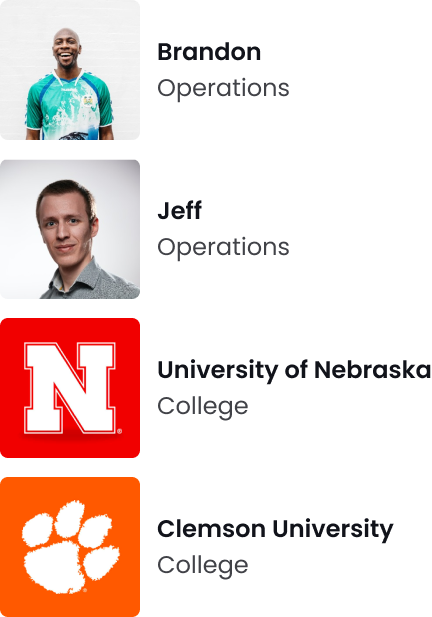
Define
After conducting interviews and synthesizing the notes from each user type, including the operations team, colleges, and brands, I was able to pinpoint the common core problems that were consistently being reported. These problems formed the basis of my understanding of the issues that needed to be addressed in the redesign process.
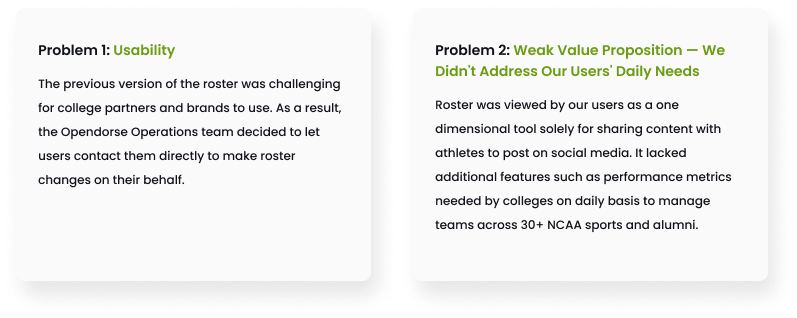
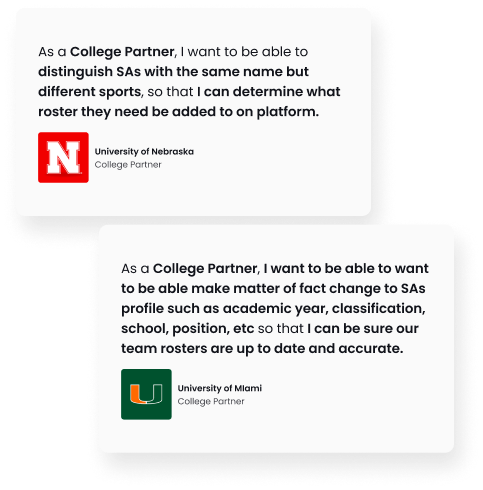
Ideate
Together with my team of engineers and project manager, we discussed potential solutions to meet our users’ needs, weighing the pros and cons of each idea.
Prototype
When the design phase began, I created user stories using the information collected from my initial user interviews. As the designs took shape, I frequently consulted with the developers to understand the feasibility of my designs. Additionally, I met with stakeholders every two weeks to present my design solutions and gather their feedback.

Test
The aim of this usability test was to determine if our updated roster was intuitive enough for the Operations team to carry out their tasks efficiently. We also sought to identify missing data points and required functionalities. Additionally, we aimed to gather qualitative feedback on user satisfaction with the new improvements.
When it was time to test the feature enhancements, the Operations team was granted access to my team’s demo application. Testing comprised three parts: scenarios and tasks, post-test questions, and a user satisfaction survey.
Solutions
Search & Filter
Improved the search functionality to allow users to search for athletes by various attributes such as name, classification, and sport.
Added a filter functionality that enables users to filter athletes by key attributes including sport, gender, groups, and social channels.
Metrics at a Glance
Improved metrics and data points to be more actionable for users. Now, users can quickly view key NIL performance metrics or profile-specific attributes at a glance.
Improved Groups
Groups was redesigned to work in conjunction with the roster, rather than as a separate tab. Users can now quickly identify groups by academic year, see the number of athletes in each group, add branding to the group, and mark groups as favorites or archive them.
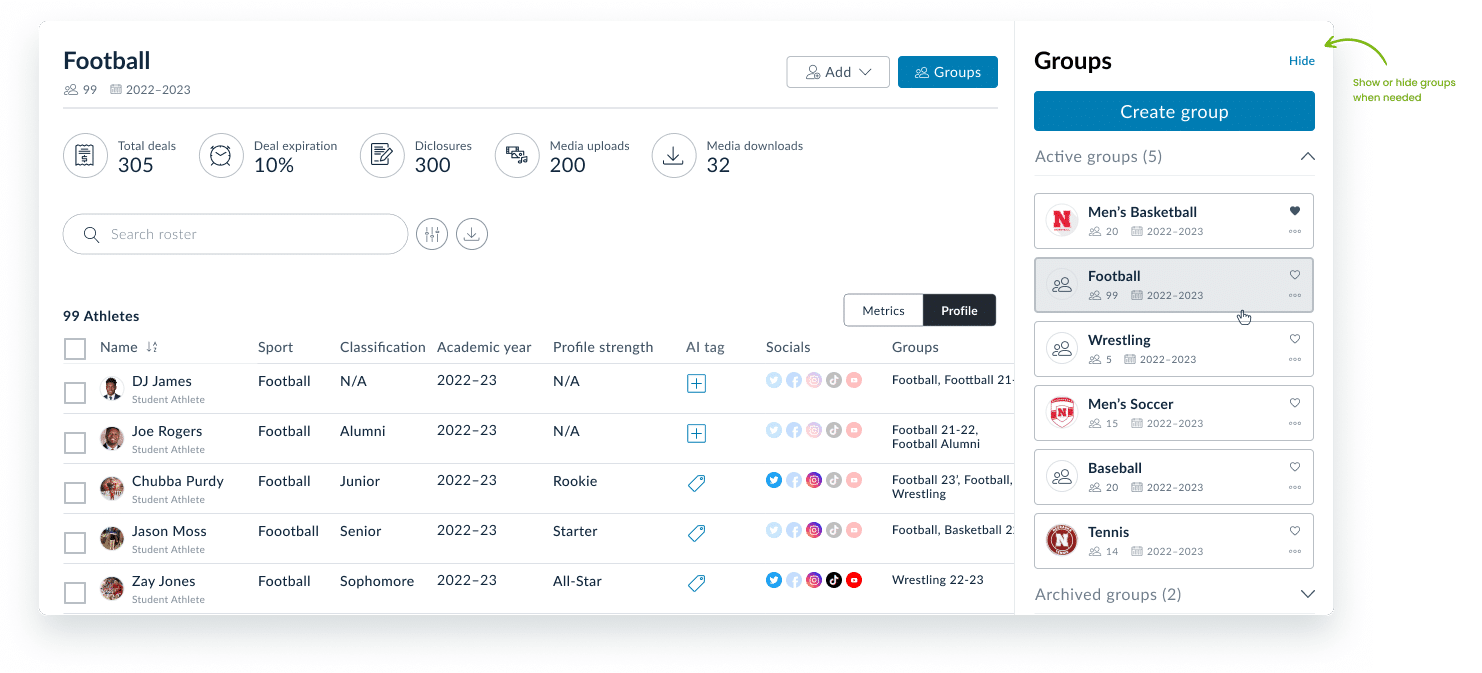
Bulk Actions
The most requested feature during interviews was bulk action functionality, so it had to be included in the update. Users can now easily select athletes in bulk to add to groups and modify information like classification or sport.
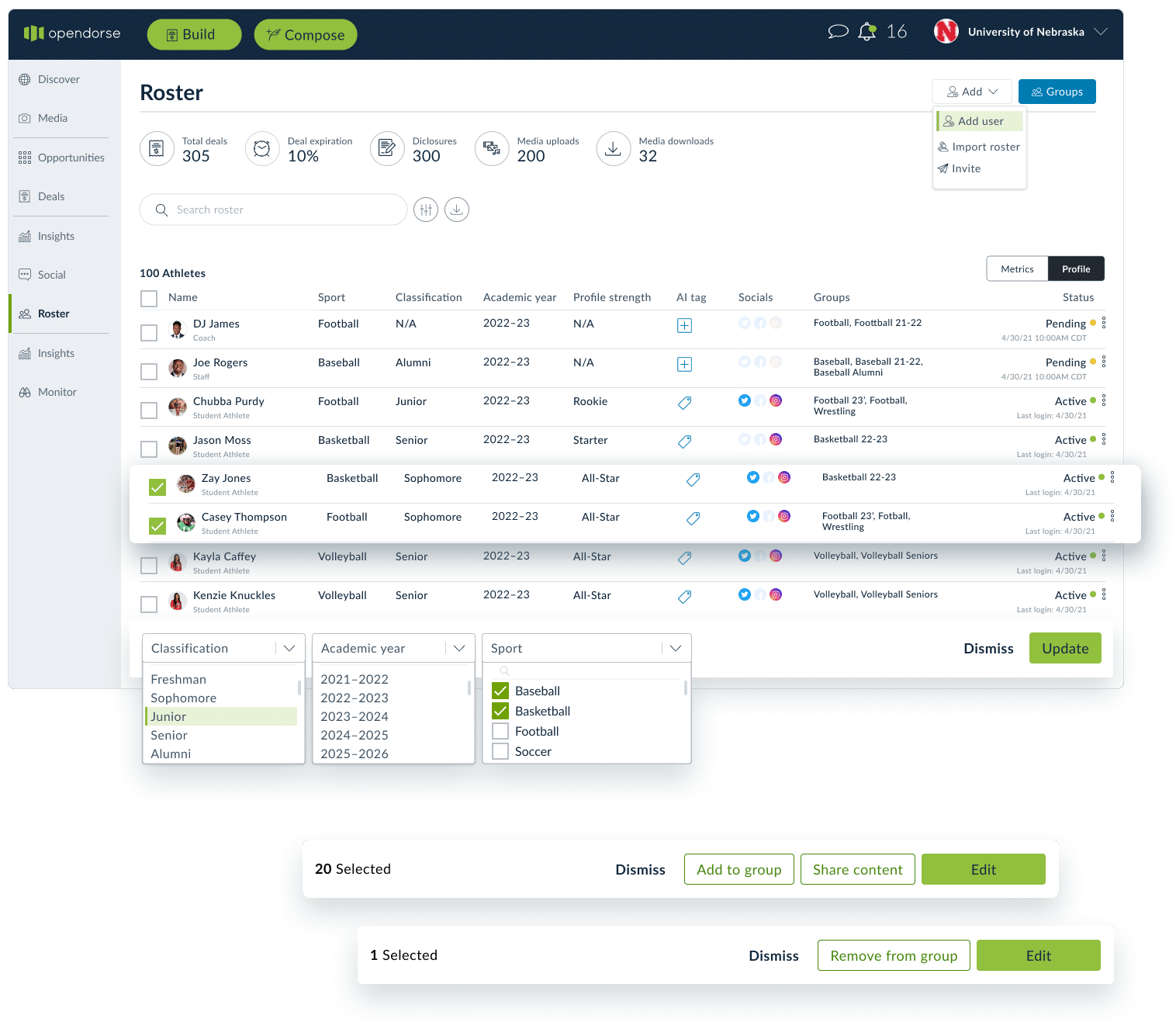
Hi-Fi Screens
conclusion
From the beginning, our goal was to make the job of our operations team easier and to enhance our tool for our users. We accomplished this. In the first month after the update, we received glowing reviews from our college partners. Our operations team also praised us for reducing their workload, enabling them to focus on more pressing issues.

